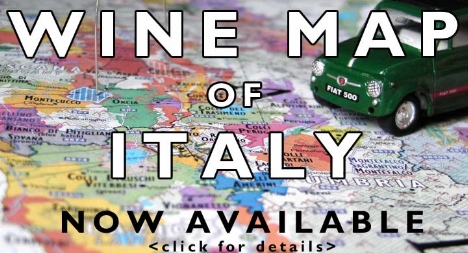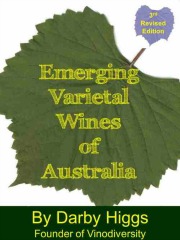Australian Wine from Alternative Grape Varieties |
||
Terroir Australis: wine and environmentTerroir is a word that gets bandied about a lot lately. You need to know what it means if you want to know if the speaker or writer knows what she or he is talking about. Terroir is a French word which does not translate directly into English. It is derived from "terra" the Latin word for earth that gives us English words such as terrain and territory. But terroir is a word that has much deeper meanings than just earth. The best definition I can find is that it refers to the totality of the environmental factors influencing viticulture at a particular site. The obvious factors are soil and climate, but it is worthwhile digging a little deeper; topography and hydrology are also important. The French have developed the idea of terroir in tandem with their Appellation Controllee system. Terroir is based on the idea that great wines can only be made in those areas (mainly in France) where there is a long tradition of winemaking. The vines, and even the winemaking itself, are integral to the natural environment. Like most deciduous plants the grapevine is most at home in the temperate zones. A distinct annual seasonal pattern seems to be required. Climate is the difference between grapes capable of making high quality wine, and those that can only just pass muster. When discussing the different characteristics of wine regions the first question we need to answer is
"Is it a cool or warm region?"
The overall temperature data of a region is often represented by the heat summation scale. The number of 'degree days' of a region is calculated by adding up the amount that the temperature exceeds 10 degrees Celsius each day throughout the vine's growing season. Heat summation doesn't give you the complete picture but it is a good first check to see which grape varieties if any are suitable. The heat summation for a few Australian wine regions are given below
These figures should be seen merely as a starting point. The actual growing conditions on individual sites can make a huge difference. For example north-facing slopes will be warmer, the local topography moderates the effects of hot winds, sloping sites are less prone to frosts, and so the list goes on. These heat summation scales do not take into account other factors considered important, such as the daily variation in temperature, the number of sunshine hours and the relative humidity. Selecting a good site for a vineyard takes all of these factors into account. Once a site is selected care is needed to use appropriate grape varieties. The time taken for grapes is a characteristic of different varieties. For example in Rutherglen early varieties may be picked in mid February, while later varieties will need until the end of March. In cool areas only early ripening varieties are feasible. Late ripening varieties will not ripen at all if planted in a cool area. Conversely in hot areas late ripening varieties are preferred. These will ripen slowly later in the autumn. Early varieties can be grown in warm climates, but as the grapes ripen in the hottest part of summer a balance between acid, sugar, flavour compounds and tannins is difficult if not impossible to achieve. Petit Verdot gives a good example of how the warmth of a wine region affects how a variety will perform. This red wine variety is part of the blend in many red wines from Bordeaux, but it is really too cool for Petit verdot in most seasons. In fact the variety is going out of fashion in its home environment. In warmer Australian regions, though Petit verdot thrives. Its late maturity is an asset in such regions as the Riverland, Murray Darling, and Riverina regions. Sirromet, for example, have had great success with the variety in Queensland. Australian Petit verdots can be soft and rich and exhibit a lovely nose with hints of violets. They are often sold as straight varietals allowing the variety to speak for itself. Many examples from cool areas are thin and acidic, usually these wines are blended. In recent years winemakers have become increasingly concerned about the prospect of warmer climate in Australian wine regions. One response has been to investigate the prospects of using new long season varieties such as fiano , aglianico, and vermentino all of which come from the warmer Mediterranean areas. Australia is blessed with a wide range of climates suitable for viticulture. A huge range of wine styles are being made, but remember we are still learning how best to match up the different grape varieties (and clones), the best way to manage the vineyard, and how to best use technology in the winery. From the consumer's point of view things are good and getting better. All of the ingredients of terroir come together to influence how the grape ripens, and thus the raw material for the winemaker's skills. We hope that the final result is a most enjoyable wine in your glass. *The information in this table and background for the article come from John Gladstones' excellent book Viticulture and Environment, the best book on terroir in Australia |
Now available for delivery in Australia, and internationally
Get a free eCookbook "10 dishes for Sangiovese" Subscribe to the Vinodiversity Newsletter using the box below 
|
|
|
|
||
|
Copyright©
Vinodiversity 2009.
Return to top |
||



